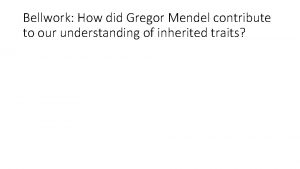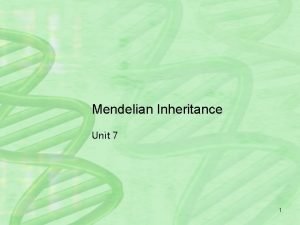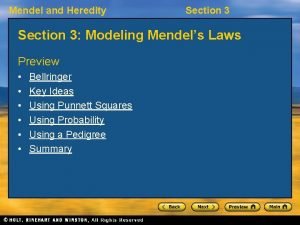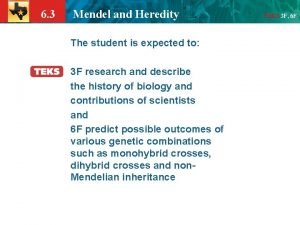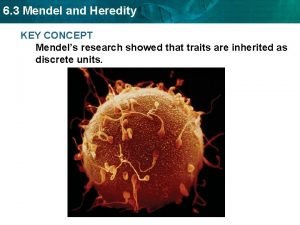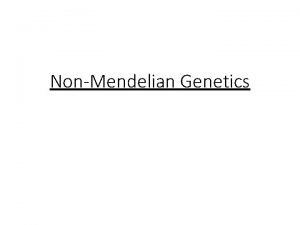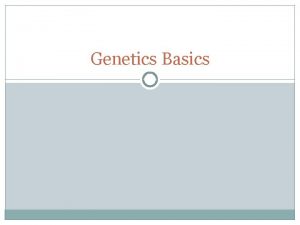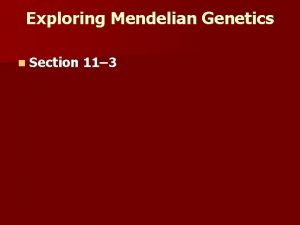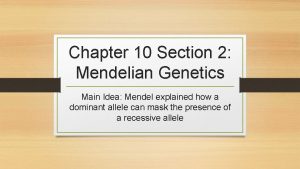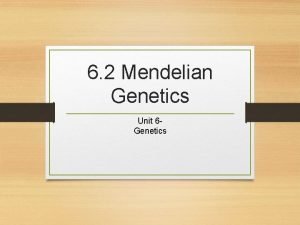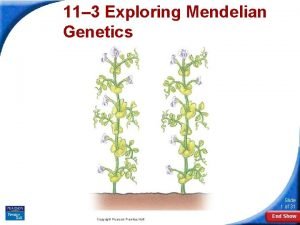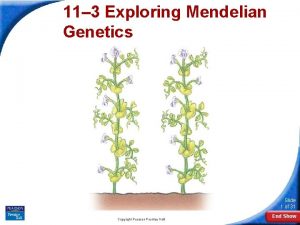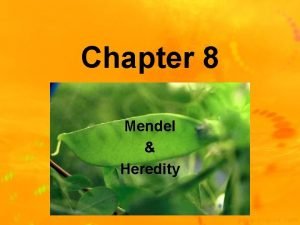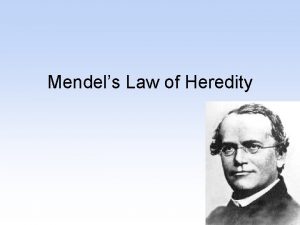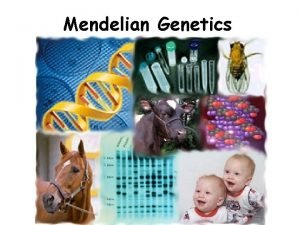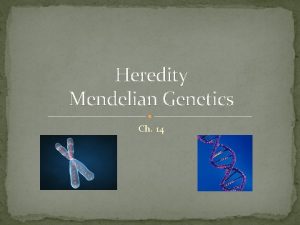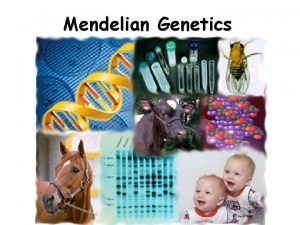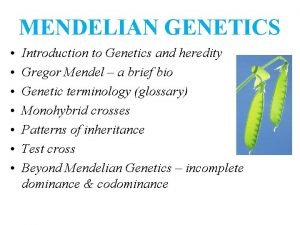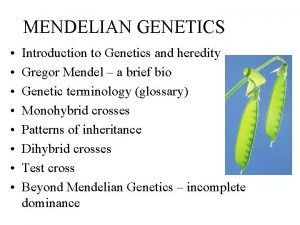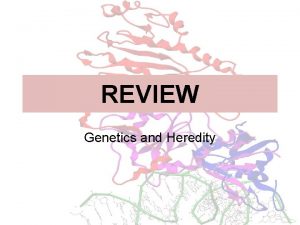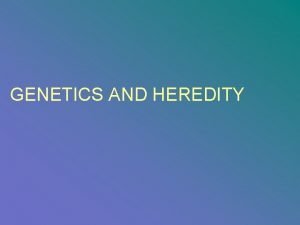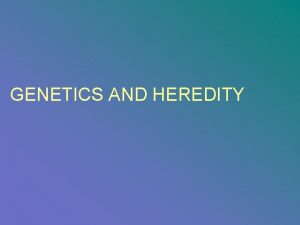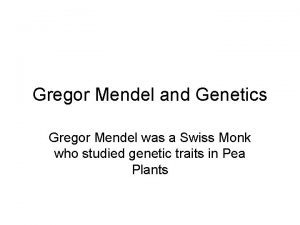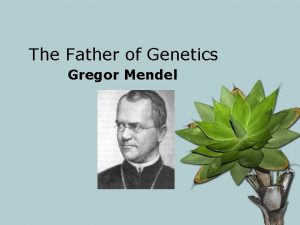Mendel and Mendelian Genetics I Gregor Mendel Heredity



















- Slides: 19

Mendel and Mendelian Genetics

I. Gregor Mendel • Heredity – passing of characteristics (traits) from parents to offspring • Genetics – biology that studies heredity

II. Pea Plant Experiments • Breeding pea plants – Reproduce sexually • Fertilization – gametes form zygote (fertilized cell) • Pollination – pollen grains from male to female

II. Pea Plant Experiments • Cross pollination – breed one plant with another (did it manually)

II. Pea Plant Experiments • Mendel observed seven characteristics. • Each occurred in two contrasting traits.

II. Pea Plant Experiments (Monohybrid Cross) • Mendel crossed short plant with tall plant (P Generation). • ALL offspring (hybrids) were tall. (F 1 Generation) • 2 nd Generation (F 2) – tall plants from 1 st generation to self-pollinate


III. Mendel’s Conclusions • Each organism has two factors that control each trait • Alleles – genes in alternative form • Genes – parts of chromosomes (DNA) that control specific characteristics

III. Mendel’s Conclusions • Organisms ALWAYS have two alleles (one on each chromosome) • Alleles can be either dominant or recessive

III. Mendel’s Conclusions • Dominant trait – masks the presence of other traits for the same characteristic • Recessive trait – is masked by dominant trait for the same characteristic

IV. Rule of Dominance • If an organism had one dominant allele, this trait would be expressed, hiding the recessive trait • Capital letters = Dominant allele • Lowercase = Recessive

V. Law of Segregation 1) There alternate versions of genes called alleles. 2) For each characteristic, an organism inherits two alleles. 3) Alleles interact in a number of ways. 4) The two alleles for a trait separate during gamete production

Vocabulary • Phenotype – observed characteristics (example: long or short neck) • Genotype – genetic makeup of an individual (example: Nn or nn)

Vocabulary • Homozygous – two of the same alleles • Homozygous dominant two dominant alleles (TT) • Homozygous recessive – two recessive alleles (tt)

Vocabulary • Heterozygous – two different alleles (Tt) • One is dominant and one is recessive

Example • Long necks in giraffes are dominant to short necks (N and n) • Genes vs. displayed trait

VII. Law of Independent Assortment • Inheritance of one trait will not affect the inheritance of another. • Only true for traits not linked.

VIII. Punnett Squares • Reginald Punnet (1905) developed Punnet squares. Monohybrid Cross

VIII. Punnett Squares • Shows probability, yet not exact outcomes (genetics follows rule of chance)
 Father of genetics
Father of genetics Gregor mendel’s principles of genetics apply to
Gregor mendel’s principles of genetics apply to How did gregor mendel contribute to genetics
How did gregor mendel contribute to genetics Family resemblance test
Family resemblance test Genes is the study of heredity and variation
Genes is the study of heredity and variation Chapter 17 lesson 2 heredity and genetics
Chapter 17 lesson 2 heredity and genetics Section 3 mendel and heredity
Section 3 mendel and heredity Section 3 mendel and heredity
Section 3 mendel and heredity Mendel 9 3 3 1
Mendel 9 3 3 1 Section 3 mendel and heredity
Section 3 mendel and heredity Section 3 mendel and heredity
Section 3 mendel and heredity Codominance example
Codominance example Section 11-3 exploring mendelian genetics answer key
Section 11-3 exploring mendelian genetics answer key An introduction to mendelian genetics
An introduction to mendelian genetics Chapter 7 extending mendelian genetics study guide answers
Chapter 7 extending mendelian genetics study guide answers Section 11-3 exploring mendelian genetics
Section 11-3 exploring mendelian genetics Chapter 10 section 2 mendelian genetics
Chapter 10 section 2 mendelian genetics Mendelian genetics punnett square
Mendelian genetics punnett square Section 11-3 exploring mendelian genetics
Section 11-3 exploring mendelian genetics Section 11-3 exploring mendelian genetics answers
Section 11-3 exploring mendelian genetics answers


